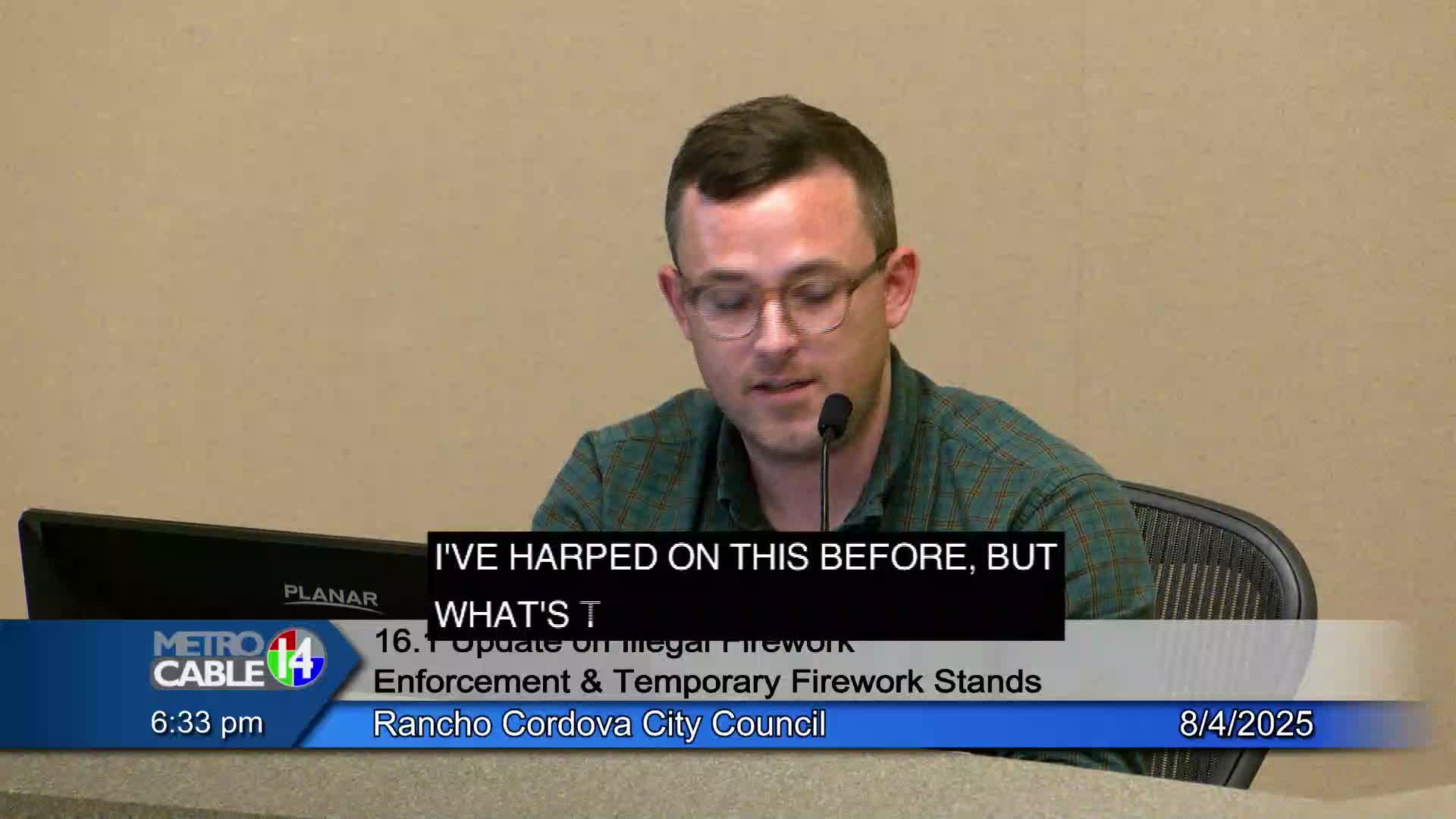Community Member Calls for Data on Citations and Youth Education in Sensitive Areas
August 04, 2025 | Rancho Cordova City, Sacramento County, California
This article was created by AI summarizing key points discussed. AI makes mistakes, so for full details and context, please refer to the video of the full meeting. Please report any errors so we can fix them. Report an error »

In the heart of Rancho Cordova, city officials gathered for a pivotal meeting that addressed pressing community concerns, particularly around public safety and the effectiveness of local regulations. As the clock ticked toward the evening, discussions turned to the challenges faced by neighborhoods, where residents expressed a mix of frustration and hope for improvement.
One resident passionately voiced their agreement on the importance of communication and education as tools for community safety. However, they highlighted a troubling reality: many in the community are aware of the dangers posed by certain behaviors yet continue to engage in them. This sentiment resonated with others present, who acknowledged the need for a stronger deterrent effect to curb these actions.
The conversation shifted to the allocation of resources, with a call for research into how Rancho Cordova's budget and staffing compare to neighboring jurisdictions. The resident emphasized the importance of understanding how the city’s efforts stack up against those of larger communities, suggesting that such data could illuminate the effectiveness of local initiatives.
A significant point of discussion was the enforcement of fines in sensitive areas, particularly near schools and parks. The resident inquired about the absence of citations despite a $10,000 fine established for violations in these zones. They requested a detailed analysis of citation data from the past three years, aiming to understand the impact of the fine and whether it effectively deterred undesirable behavior.
Moreover, the resident raised concerns about the demographics of those receiving fines, questioning whether the burden fell disproportionately on youth. They advocated for targeted educational efforts if young people were indeed the primary offenders, suggesting that a focus on prevention could foster a more supportive community environment.
As the meeting progressed, it became clear that the residents of Rancho Cordova are eager for actionable insights and collaborative efforts to enhance safety and well-being in their neighborhoods. The discussions underscored a collective desire for data-driven strategies that not only address immediate concerns but also pave the way for a more informed and engaged community moving forward.
One resident passionately voiced their agreement on the importance of communication and education as tools for community safety. However, they highlighted a troubling reality: many in the community are aware of the dangers posed by certain behaviors yet continue to engage in them. This sentiment resonated with others present, who acknowledged the need for a stronger deterrent effect to curb these actions.
The conversation shifted to the allocation of resources, with a call for research into how Rancho Cordova's budget and staffing compare to neighboring jurisdictions. The resident emphasized the importance of understanding how the city’s efforts stack up against those of larger communities, suggesting that such data could illuminate the effectiveness of local initiatives.
A significant point of discussion was the enforcement of fines in sensitive areas, particularly near schools and parks. The resident inquired about the absence of citations despite a $10,000 fine established for violations in these zones. They requested a detailed analysis of citation data from the past three years, aiming to understand the impact of the fine and whether it effectively deterred undesirable behavior.
Moreover, the resident raised concerns about the demographics of those receiving fines, questioning whether the burden fell disproportionately on youth. They advocated for targeted educational efforts if young people were indeed the primary offenders, suggesting that a focus on prevention could foster a more supportive community environment.
As the meeting progressed, it became clear that the residents of Rancho Cordova are eager for actionable insights and collaborative efforts to enhance safety and well-being in their neighborhoods. The discussions underscored a collective desire for data-driven strategies that not only address immediate concerns but also pave the way for a more informed and engaged community moving forward.
View full meeting
This article is based on a recent meeting—watch the full video and explore the complete transcript for deeper insights into the discussion.
View full meeting
